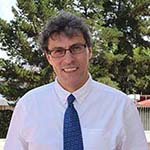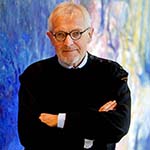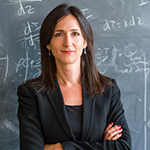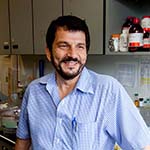The CAP is pleased to welcome all the guest speakers at the 2015 Congress in Edmonton.
Herzberg Public Speaker

Prof. Miguel Alcubierre
Nuclear Sciences Institute
National University of Mexico
“Faster than the Speed of Light”
In this talk I will give a short introduction to some of the basic concepts of Einstein’s special theory of relativity, which is at the basis of all of modern physics. In particular, I will concentrate on the concept of causality, and why causality implies that nothing can travel faster than the speed of light in vacuum. I will later discuss some of the basic ideas behind Einstein’s other great theory, General Relativity, which is the modern theory of gravity and postulates that the geometry space-time is dynamic and the presence of large concentrations of mass and energy produce a “curvature” in space-time. I will then talk about how the curvature of space-time can be used in several ways to travel “faster than the speed of light” by distorting the geometry away from that of flat space. In particular, I will discuss the ideas behind the geometric model for a “warp drive”.
Monday, June 15, 19:30
Plenary Speakers

Prof. Francis Halzen
Wisconsin IceCube Particle Astrophysics Center and
Department of Physics, University of Wisconsin-Madison
“IceCube and the Discovery of High-Energy Cosmic Neutrinos”
The IceCube project has transformed one cubic kilometer of natural Antarctic ice into a neutrino detector. The instrument detects 100,000 neutrinos per year in the GeV to PeV energy range. Among those, we have recently isolated a flux of high-energy cosmic neutrinos. I will discuss the instrument, the analysis of the data, and the significance of the discovery of cosmic neutrinos.
Thursday, June 18, 11:45

Prof. Wick Haxton
Institute for Nuclear Physics, University of Washington
Department of Physics, University of California
“Neutrino Physics: On Earth and in the Heavens”
The discovery 15 years ago that neutrinos have mass and can spontaneously change their flavors has led to intense activity in nuclear and particle physics, including plans for powerful neutrino beams for long-baseline oscillation experiments and for ton-scale ultraclean underground detectors for double beta decay studies. Our improved knowledge of neutrinos has also enabled us to understand better their roles in astrophysics. Supernova neutrinos may be responsible for important nucleosynthesis in the first stars that formed in our galaxy, and solar neutrinos may allow us to determine the metallicity of the primordial gas cloud from which our solar system formed. I will review some of these themes and their connections, arguing that recent neutrino discoveries are just the beginning of a series of surprises.
Wednesday, June 17, 10:45

Prof. Sara Seager
Massachusetts Institute of Technology
“Exoplanets and the Search for Habitable Worlds”
Thousands of exoplanets are known to orbit nearby stars with the statistical inference that every star in our Milky Way Galaxy should have at least one planet. Beyond their discovery, a new era of “exoplanet characterization” is underway with an astonishing diversity of exoplanets driving the fields of planet formation and evolution, interior structure, atmospheric science, and orbital dynamics to new depths. The push to find smaller and smaller planets down to Earth size is succeeding and motivating the next generation of space telescopes to have the capability to find and identify planets that may have suitable conditions for life or even signs of life by way of atmospheric biosignature gases.
Monday, June 15, 13:00

Prof. David A. Weitz
SEAS Harvard
“Cell Stiffness and Cell Volume”
The stiffness of cells is commonly assumed to depend on the stiffness of their surrounding: bone cells are much stiffer than neurons, and each exists in surrounding tissue that matches the cell stiffness. In this talk, I will discuss new measurements of cell stiffness, and show that cell stiffness is strongly correlated to cell volume. This affects both the mechanics and the gene expression in the cell, and even impacts on the differentiation of stem cells.
Friday, June 19, 12:45
